Exploring different sounds and tones for your guitar is a neverending journey. This becomes pretty clear not long after you begin to learn how to play electric guitar especially. Technology aside, there is just so much raw creativity out there and so much inspiration to draw from. When you hear a sound you like and you want to try to capture that for yourself, you’re off to the races and the exploration begins.
To most of us, it’s some of the most fun you will have as a guitar player. For others, it’s so overwhelming, it can become a little aggravating. That’s why I love helping students find the sounds they are after by helping to narrow down the options to make things a little easier.
In the case of the Indie Rock genre, it can be hard to nail down a particular sound. This type of music tends to be sort of amorphous compared to other genres, unbound by the restrictions that tend to be placed on commercial rock. When searching for sounds, one needs to be open to thinking outside the (stomp)box and look beyond the staples such as the Tube Screamer or the Super Overdrive.
That doesn’t mean it has to be complicated or overly avant garde. It can still be simple. This list of mine has simplicity, but it also has some oddities that you might appreciate if you are a fan of Indie Rock. Before we dive into the pedals, I think it’s important to quickly define “Indie” Rock so we have a better understanding of what to look for in a pedal setup.
What Is Indie Rock?
Indie Rock started in the US and the UK and can be traced back to the 70s when punk rock was coming of age. “Indie” refers to the independent record labels that musicians would flock to for various reasons, be they budget reasons or for the purposes of creativity. There was a “DIY” approach to recording techniques and production, as well as an avenue for artists to diverge from the mainstream.
Indie Rock then became its own subset of rock and particular sounds and styles were associated with this type of music. Heck, it’s more than just a genre, it’s more of a lifestyle. It was sometimes referred to as “Alternative Rock” or “Guitar Pop”, although the terms are not always interchangeable. Some examples of Indie Rock artists that are more well known would be The Strokes, Death Cab For Cutie, Arcade Fire, and Vampire Weekend.
Some Indie bands really made it big, so one could argue they ceased to be true “indie” at that point in their career. Names like Nirvana, The Killers, and The White Stripes come to mind. Semantics aside, you get the point. Want to get familiar with Indie Rock? Start with this hand full of bands.
With that loose definition of Indie Rock, let’s dive into some great pedals to add to your chain that will help you get some of the sounds of this wonderfully creative world of music. Here’s the shortlist, then we’ll dig into the particulars. You’re gonna need:
- Fuzz
- Reverb
- Chorus
- Pitch-Shifter
- Phaser and/or Flanger
1. Fuzz: Big Muff Pi

An absolute necessity with Indie Rock is a good Fuzz pedal. “Fuzz” is sometimes used synonymously with overdrive or distortion (even by me), but it’s technically a bit different. Although it’s in the distortion family, the difference is that it tends to be smoother and warmer than a typical distortion.
This has been a go-to pedal since the days of Hendrix and was one of only two pedals that Jack White used for a long time with The White Stripes. If you look at any of your favorite Indie Rockers’ pedalboards, chances are high you will find this pedal.
A new one will run you about $85.
Runner-Up: Way Huge Swollen Pickle
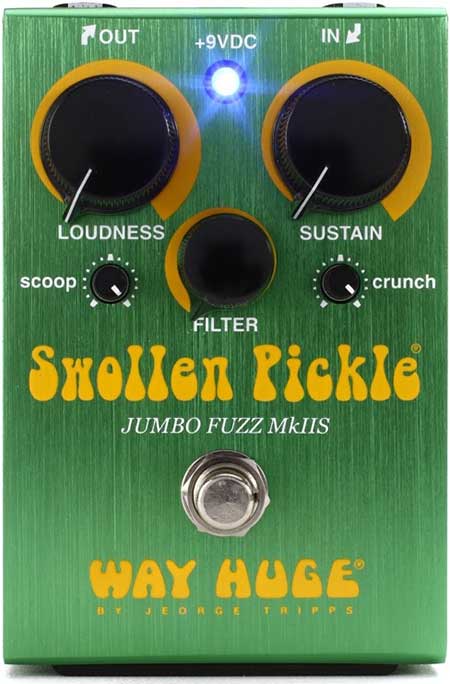
Besides being the best name for a pedal ever, this is a great fuzz option to consider. It has a few more options than the Big Muff if you want to have some more customization to the sound. There’s more control in the characteristics of the distortion as well as the mid-range EQ. The distortion ranges from bright and fizzy to dark and wooly.
The Swollen Pickle weighs in at $130.
2. Reverb: Strymon Blue Sky
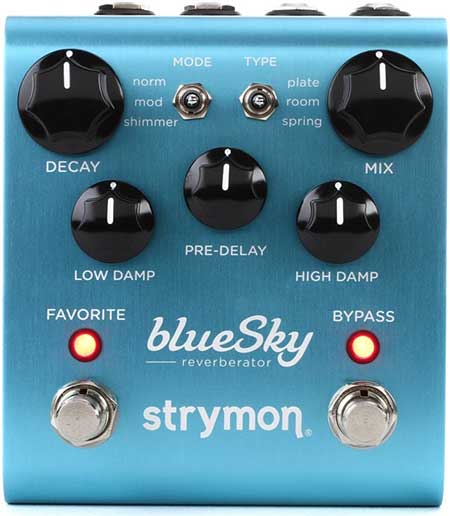
You’d be hard-pressed to find an Indie pedalboard without a reverb. This pedal has the advantage of having a memory that will store a setting by using the “favorite” switch. Although I never used this pedal live, a guitar player that I used to play with has one and I just loved having him turned up in my ears when he would kick this in. The shimmer from this pedal is just great. There’s a wide range of reverb sounds from a big stadium reverb to a quick spanky slap-back.
This one tends to take a little time to dial in and has a glistening price of $200, but it’s worth it. Dave Keuning of The Killers uses the Big Sky, which is the big brother to this pedal and has a big-brother price tag of $480, but if you have the extra cash, I ain’t stoppin’ ya!
Runner-Up: MXR M300 Digital Reverb

The problem is for a lot of us, a good reverb is expensive. MXR has a solid reverb pedal that is simpler to use and takes up less real estate on the pedalboard. I typically use it with acoustic, but it works great with electric when you need to have your guitar sound like it’s playing in a big space.
Like the Blue Sky, it’s right at $200. Amazon usually has a package deal that includes some patch cables and a power supply. You can also find these used fairly easily. And MXR has a tank-like housing, so there’s no need to be afraid of going pre-owned.
3. Chorus: Electro Harmonix Small Clone
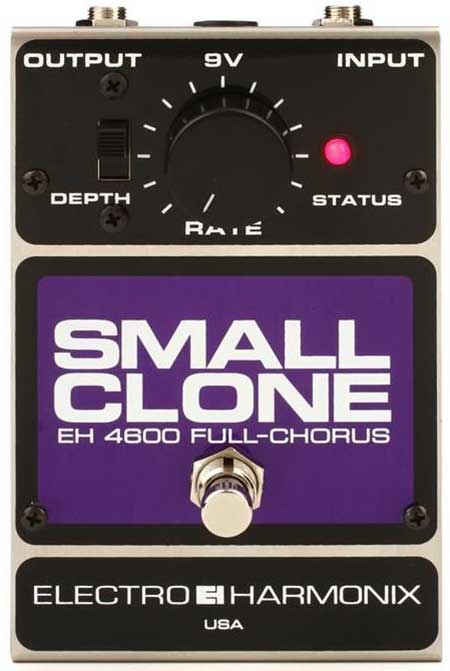
Chorus is a great effect for adding depth and modulation to your sound. This particular pedal was used by Kurt Cobain. Chorus is actually a type of delay pedal, whereby the note that is played on the guitar is copied, played back at a slight delay, and modulated down, or “detuned” to add a bit of dissonance.
Along with reverb, chorus is often featured as an onboard effect on some combo amps but doesn’t have much in the way of options or customization. To really get the most out of the effect, a pedal is necessary. The small clone really has that vintage sound that Indie rockers crave.
The small clone is pretty reasonable at $115 or so.
Runner-Up: Boss Super Chorus
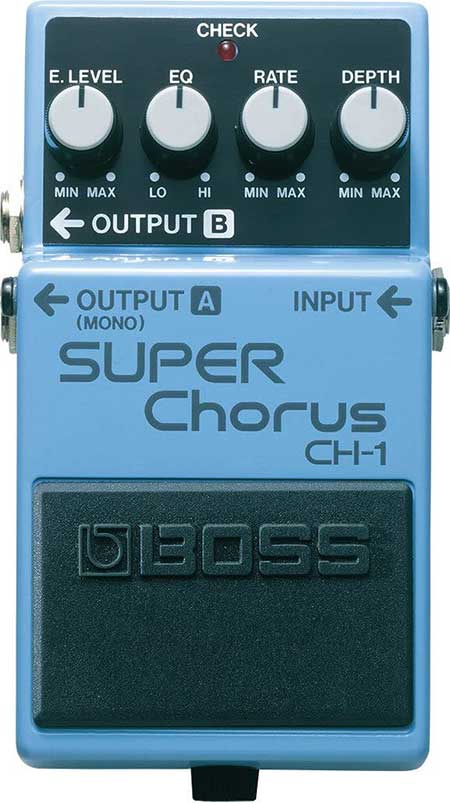
This is the industry standard, which may or may not make a true Indie artist gag. Regardless of your stance on the idea of “industry standard”, this is still a good pedal. It’s not quite the vintage chorus of the 80s and early 90s, but it does the job and is fairly easy to shape.
For $140, you can typically get a package deal with it.
4. Pitch Shifter: Digitech Whammy
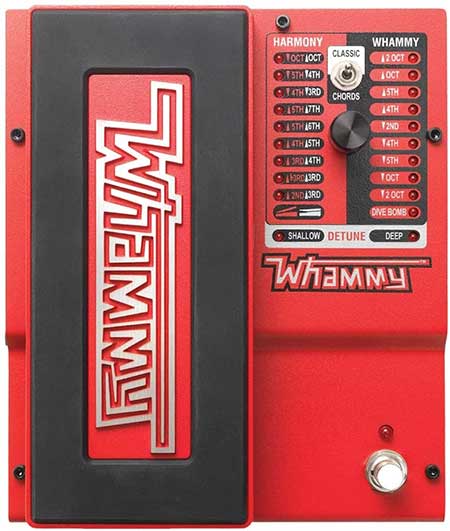
This has been a popular pedal with many guitarists including Steve Vai, Tom Morello, Matt Bellamy (Muse), and Jack White. The most used setting on this pedal is the “Octave Up” on the right side of the dial, which transposes the note played to a whole octave higher when the expression pedal is pressed to the toe position.
However, there is a lot more to this pedal than that with additional pitch manipulations and a harmonizing section on the left side of the dial where the heel and toe positions add a different interval to the note that is being played.
The only downside to this pedal is the harmonizer really doesn’t sound good if you don’t have your volume all the way up. If played too quiet, the harmonized note deteriorates and sounds out of tune. At least, that was the case on my 4th generation Whammy. Maybe the 5th generation pedals track a little better, but just keep that in mind when you head to the music store to test it out.
The Whammy hits around $240.
Runner-Up: Electro Harmonix Micro POG

“POG” stands for Polyphonic Octave Generator. If all you want for pitch-shifting is the added octave, then this will be the pedal for you. For about $215, it may not seem very exciting that all it does is add an octave up and/or and an octave below the note(s) being played, but man it does its job very well.
There are not a lot of options as with the Whammy and it tends to be a little more of a specialized, niche pedal, but it’s a really cool toy nonetheless and comes in handy for you Indie guys and gals looking for a little something different. If you crank up both octaves, you can get a really cool, almost synthesizer kind of sound.
If you want to get into the world of the POG, the micro is a good place to start. Its daddy, the POG 2, is a kick-ass pedal. Again, not an every-song or every-situation kind of pedal, but if you have the disposable $350 and want to have some fun, go for it!
5. Phaser: MXR M107 Phase 100

The phase effect is achieved by splitting the signal in two, changing the depth of the copied signal, then modulating it over time to create a sweeping effect. The copied, modulating signal is then mixed with the original signal for the full effect. The MXR Phase 100 is a favorite of Ezra Koenig of Vampire Weekend.
With the intensity knob, you can control the depth of the filter. The speed knob controls the speed of the modulation.
The MXR Phase 90 is the basic version which only has a control for the speed. The 100 goes for $120 and the 90 is a little cheaper at $80. This is a good, basic pedal to have in your rig.
Runner-Up: Boss BF-3 Flanger
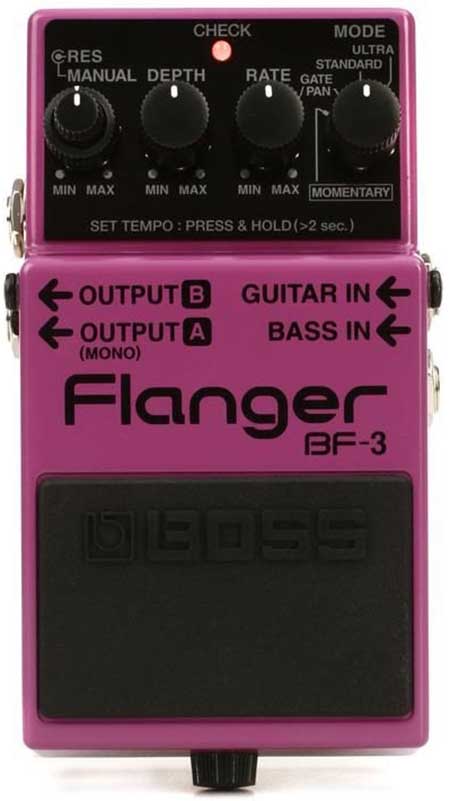
Flangers also have a sweeping effect to them, but this particular sweep is achieved by slowing the copied signal down, speeding it back up, then repeating this process over and over. This alternating of speed creates a kind of “jet plane” sound. A good, clean example of this is “Lightning Crashes” by Live.
It’s really up to you whether or not you want to get a phaser or a flanger. The phasers tend to be a little simpler and cheaper, so that may be a good place to start. It might not be a bad idea to get both!
The Boss BF-1 goes for about $140.
These are just a few examples of what you will find when you look at multiple pedalboards from various Indie artists. These will give you a good start for building your pedal arsenal to get those unique, creative sounds that set the Indie genre apart.
A really great article that I came across was “America’s Saddest Pedalboard: The Indie Board”. The idea was a contest of who had the most pitiful pedalboard and the prize was the Indie Board, which was a simple pedalboard that had all the basic essentials a typical Indie guitarist needs. This is a good pedalboard to use as a template, although there would be a few that I would sub out personally. It may help you out, so check it out as you are looking to build your own Indie Board.

